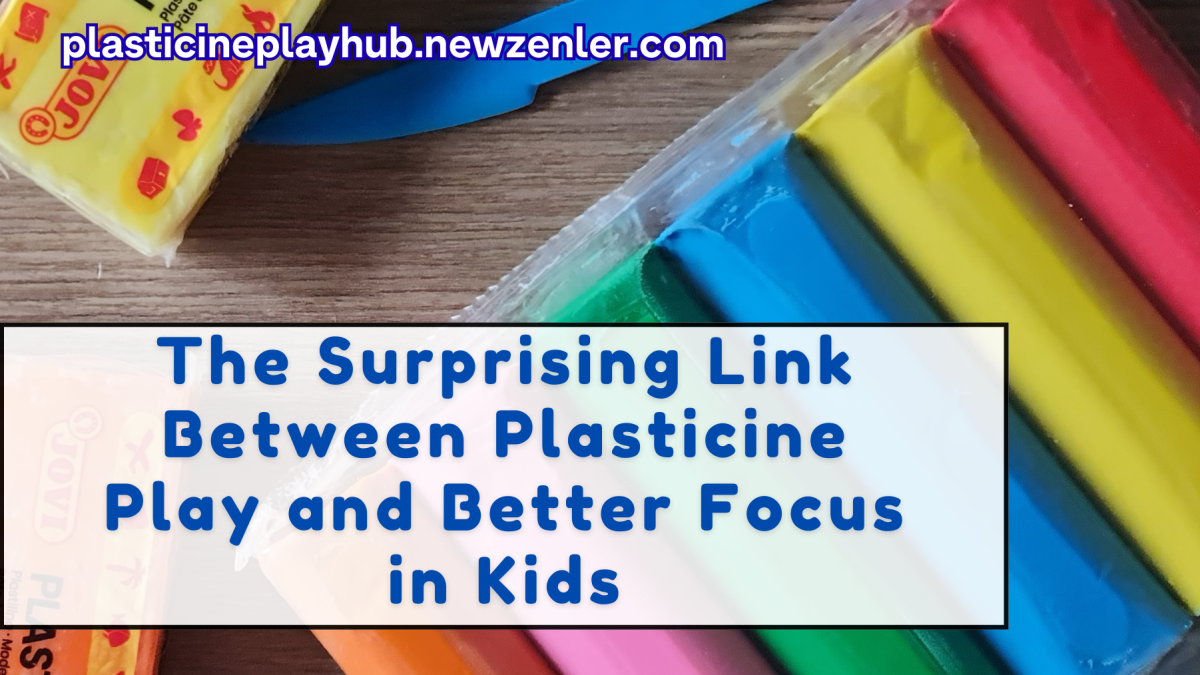The Surprising Link Between Plasticine Play and Better Focus in Kids

Explore how plasticine play enhances children’s focus, calming their minds while boosting attention and concentration for everyday learning tasks.
You’ve probably seen it — your child sitting at the kitchen table, meant to be coloring, but after two minutes they’re twisting around in their chair, reaching for a toy, or staring into space.
We often label this as “short attention span,” but what if there’s more to the story?
And here’s the surprising part:
Building focus in kids isn’t just about telling them to “pay attention.” It’s about giving their brain and body the right kind of tasks that train concentration without them even realizing it.
One of the simplest and most powerful tools for this? Plasticine play.
Why Focus is More Than Just “Trying Harder”
Focus is a combination of mental and physical readiness. For a child to stay on task, several things need to happen:
- Their body must be calm enough to sit still.
- Their brain needs to filter out distractions.
- Their hands need the stamina to keep working without getting tired.
If any one of these is missing, attention drifts.
This is where parents often feel stuck — because more “sit down and try harder” time rarely works. Kids need practical, engaging exercises that make focus a natural by-product.
The Science (Without the Jargon)
When kids play with plasticine — rolling, squishing, shaping — they’re not just having fun. They’re engaging multiple parts of the brain at once:
- Sensory input from touch helps calm the nervous system.
- Fine motor activity strengthens the small hand muscles needed for writing, cutting, and drawing.
- Sequential thinking (planning what to make next) keeps the brain engaged.
This mix of calm + active engagement creates the perfect zone for concentration training.
It’s the same principle occupational therapists use — but in a form that feels like pure play.
Why Plasticine Holds Attention Longer than Worksheets
Think about it: a worksheet gives one sensory input — visual.
Plasticine, on the other hand, engages:
- Touch (texture, resistance)
- Sight (colors, shapes)
- Movement (pressing, rolling, pinching)
Multi-sensory activities naturally hold attention longer because the brain is receiving varied input, making it less likely to wander.
In Blog Post 1, we explored how fine motor challenges can hold kids back academically. Now, we’re taking it a step further — showing how the same fine motor activities also build focus skills that spill over into every part of learning.
Real-Life Example: From Wandering Mind to Laser Focus
“Ella,” age 7, could barely sit through a 5-minute reading session without fidgeting or losing track. Her parents tried everything — timers, reward charts, short breaks — but nothing seemed to help.
Instead of fighting the focus battle directly, they introduced a new after-school routine:
- Step 1: 5 minutes of rolling and shaping plasticine “snakes” into letters.
- Step 2: Building small scenes from the Plasticine Play Weather Series, like forming clouds and raindrops.
- Step 3: Brief discussion about what they made before moving to homework.
Within a month, her teacher noticed Ella was able to stay on task for longer stretches. The physical act of creating with her hands primed her brain for focus.
The Hidden Link Between Hand Strength and Mental Stamina
Here’s something few parents realize:
When a child’s hands get tired quickly, their brain starts to “check out” too.
By strengthening the hands through playful resistance (like plasticine), you’re also strengthening their ability to stay engaged with a task longer.
That’s why even just 10 minutes of purposeful plasticine play daily can lead to noticeable improvements in:
- Homework focus
- Ability to finish art projects
- Following multi-step instructions
Try This: The “Focus Builder” Plasticine Challenge
Here’s a quick activity you can try at home:
- Give your child two small balls of plasticine in different colors.
- Challenge them to make five tiny raindrops with one color, and five tiny suns with the other.
- Once finished, ask them to arrange the pieces in a pattern (e.g., sun–rain–sun–rain).
This activity:
- Strengthens fine motor muscles
- Improves bilateral coordination (both hands working together)
- Requires focus to complete a sequence without getting distracted
Building a Focus Habit — Without the Battles
The beauty of plasticine play is that kids don’t see it as “work.” There’s no pressure to “get it right.” Instead, they stay engaged because they’re creating something tangible — and that sense of achievement boosts their willingness to focus the next time.
Over time, these short sessions build mental endurance.
And here’s where the Plasticine Play Weather Series comes in. With ready-to-use worksheets and themed activities, you can:
- Incorporate focus training into daily routines
- Give kids a reason to stick with a task until it’s finished
- Make skill-building something they ask to do
In the next part of this journey, we’ll explore How Plasticine Play Boosts Bilateral Coordination (and Why It Matters for School Skills) — because when both hands learn to work together, everything from cutting to sports becomes easier and more enjoyable.
Categories: : fine motor development, school readiness, tactile development
 Tamara Mamedova
Tamara Mamedova 